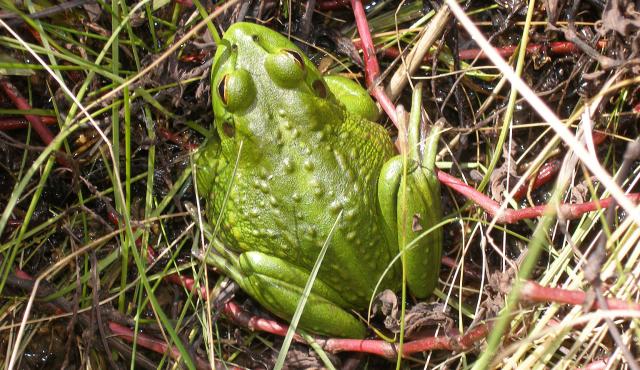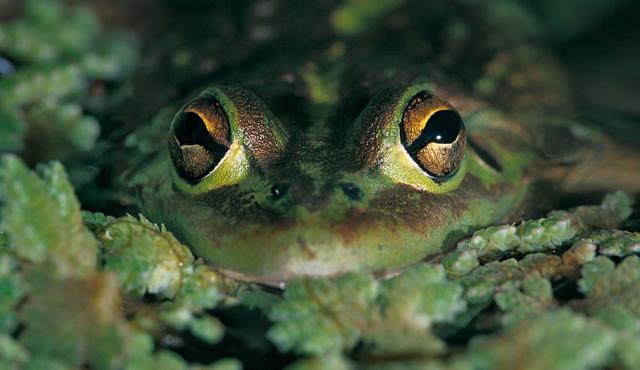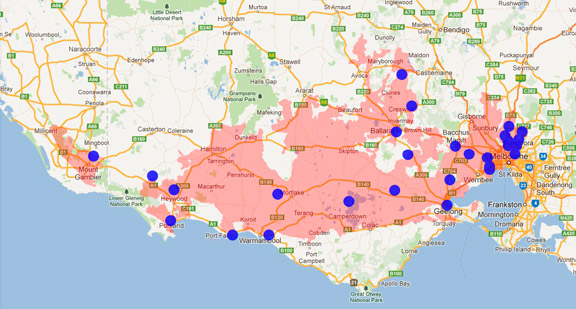A range of teacher professional learning programs will be developed to accompany the Biodiversity of the Western Volcanic Plains online outreach...




Growling Grass Frog
Litoria raniformis
Breeding season: Spring and early summer. Females lay 1,900-3,900 pigmented eggs in a floating jelly raft which sinks soon after. Males generally call while floating in open water.
| Details | Description |
| Type | Amphibian |
| Group | Frog - Tree Frog |
| Other Common Names | Southern Bell Frog, Golden Bell Frog, Warty Bell Frog |
| Identifying Characteristics | |
| Distinctive Markings | Adults vary from bright green to brown with brown or golden blotches on a warty back. Elongated snout and distinct tympanum. |
| Diet | Carnivore. Adults feed on crickets, cicadas, beetles, moths, caterpillars, other invertebrates, small frogs and fish. |
| Habitat | Well vegetated ditches, dams and swamps |
| Native Status | Native to Australia |
| Sounds | The identifying call is a repeated long growl "crawark-crawark-crok-crok". |
| Taxonomy | |
| Phylum | Chordata |
| Class | Amphibia |
| Order | Anura |
| Family | Hylidae |
| Genus | Litoria |
| Species | raniformis |

Distribution maps indicate current and historic locations where species have been sighted.
Source: Atlas of Living Australia
| Conservation Status | |
| DEPI Advisory List | Endangered |
| FFG Act | Listed as threatened |
| EPBC Act | Vulnerable |
The conservation status of species is listed within Victoria and Australia.
The Department of Environment and Primary Industry (DEPI) Advisory List consists of non-statutory advisory lists of rare or threatened flora and fauna within Victoria.
The Flora and Fauna Guarantee Act 1988 (FFG Act) lists threatened species in Victoria. Under the Act, an Action Statement is produced for each listed species.
The Environment Protection and Biodiversity Conservation Act 1999 (EPBC Act) is the Australian Government’s key piece of environmental legislation, listing nationally threatened native species and ecological communities.



